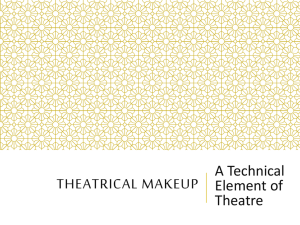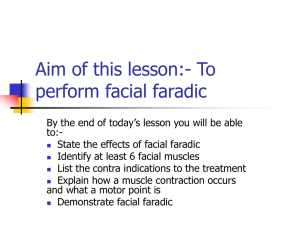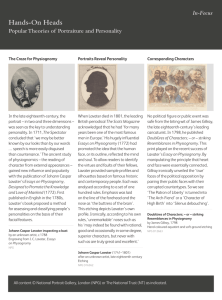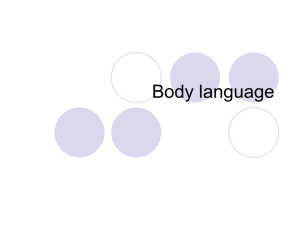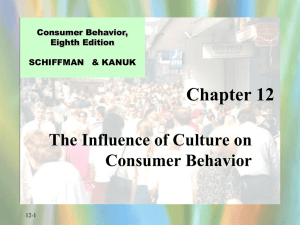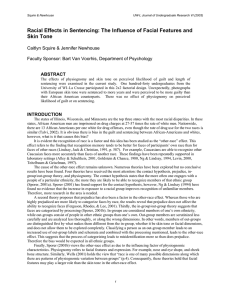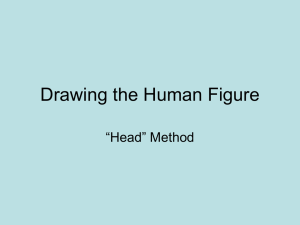THEATRICAL MAKEUP
advertisement
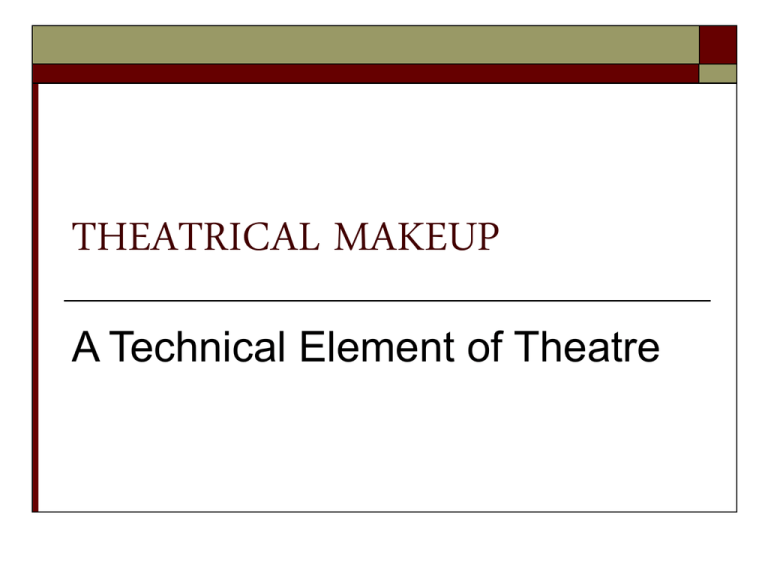
THEATRICAL MAKEUP A Technical Element of Theatre Actors are judged not only by their acting but by their appearance Actors who appear on stage must learn makeup techniques Make up artists are routinely used on movie, television, etc. sets Make up artists are rarely used in live stage performances Stage actors must do their own makeup CHARACTER ANALYSIS To create a unique characterization you need to analyze the character - what are the factors that make a character different from the others? FIRST THING IS TO READ THE SCRIPT!!! CHARACTER ANALYSIS HEARTH is a mnemonic to remember the six elements of character analysis H- Heredity E- Environment A- Age R- Race T- Temperament H- Health CHARACTER ANALYSIS HEREDITY Family Traits Inherited characteristics from parents and grandparents Red Hair (Life with Father) CHARACTER ANALYSIS ENVIRONMENT Determines a person’s appearance Work indoors / outdoors Works day / night Rich / poor Time Element /historical period Deep tan (few years ago) Peaches n cream (hundred years ago) Pasty White (Restoration period) CHARACTER ANALYSIS AGE Chronological age is only one aspect Also influenced by: Heredity Prematurely gray hair Pattern baldness AGE - CONTINUED Environment Health Sun or wind caused wrinkles Chronic illness ages a person Temperament Frown caused wrinkles Smile caused wrinkles CHARACTER ANALYSIS RACE Less common today for actors to portray other races Some plays it is important to understand appearance related characteristics of major racial groups The King and I CHARACTER ANALYSIS TEMPERAMENT Personality Person who smiles a lot has “crows feet” (lines at corner of eyes) Person who frowns has “frown lines” (vertical wrinkles between eyebrows) CHARACTER ANALYSIS HEALTH Acute illness Must know physical / visible characteristics Measles, cold, seasickness Chronic illness Long duration or frequent occurrence Arthritis, asthma, multiple sclerosis CHARACTER RESEARCH Three basic sources of information: What the playwright says about character: Time and place of play If says “the present” must find out when play was written Sources of Information cont. Stage directions / descriptions What a character says about themselves or what other characters say about them Must read carefully because characters can lie About themselves or others Talk, dark, handsome Must take everything into account including motives of characters Facial Anatomy Must know the underlying bone structure of the human face to create good theatrical makeup Facial Anatomy Facial Anatomy Facial features are effected by the aging process Muscles in the face used the most retain strength and flexibility Underused muscles stretch and sag due to gravity Facial Anatomy How the aging process affects specific areas of the face Becomes more pronounced or prominent with age Frontal eminence Superciliary arch Temporal fossae Zygomatic arch Naso-labial folds Facial Anatomy with age Individual features also become more prominent Cleft chin Sunken eyes Nose (as the skin sags around it) Facial Anatomy – with age Lips become thinner and loose natural color Sagging muscles create jowls Eyelids sag and droop Complexions also change Age spots Red nose and cheeks on heavy drinkers (caused by broken capillaries at surface of skin) Physiognomy Judging a person’s character by looking at facial features We associate certain character traits / emotions with certain features Physiognomy Facial features convey information about a character Used by cartoonist to immediately show emotion and character Individual features are influenced by other features so whole face must be considered Physiognomy Forehead High forehead / receding hairline Shows high intelligence (men & women) Frown lines Bad tempered person Deep concentration Physiognomy Eyes (the windows to the soul) Prominent eyes = dreamer Deep set eyes = analytical Small, close set eyes = dishonesty Large, well spaced eyes = trustworthy Crows feet = happy Physiognomy Eyebrows Full eyebrows = forceful person Bushy eyebrows/ hair growing in all directions = disorganized Close to the eyes and growing close together = cunning & mean High arched brows = gullible & little intelligence Physiognomy Nose Larger = strength/ leadership Long & narrow = refined taste Bulbous (large rounded tip) = dissipation (especially if red) Pointed = nosy Bent = rough / physical type Longer = older in age Physiognomy Mouth and lips Wide = generous Small = tightfisted or closed-mouth Full = sensuous Thin = strict Physiognomy Chin Strong chin = strong / aggressive Weak & receding = weak willed / passive Physiognomy Cheeks Rounded & red = jolly Thin or sunken = businesslike Jugal fold (Pronounced wrinkle halfway between the mouth and ear) = cruel
